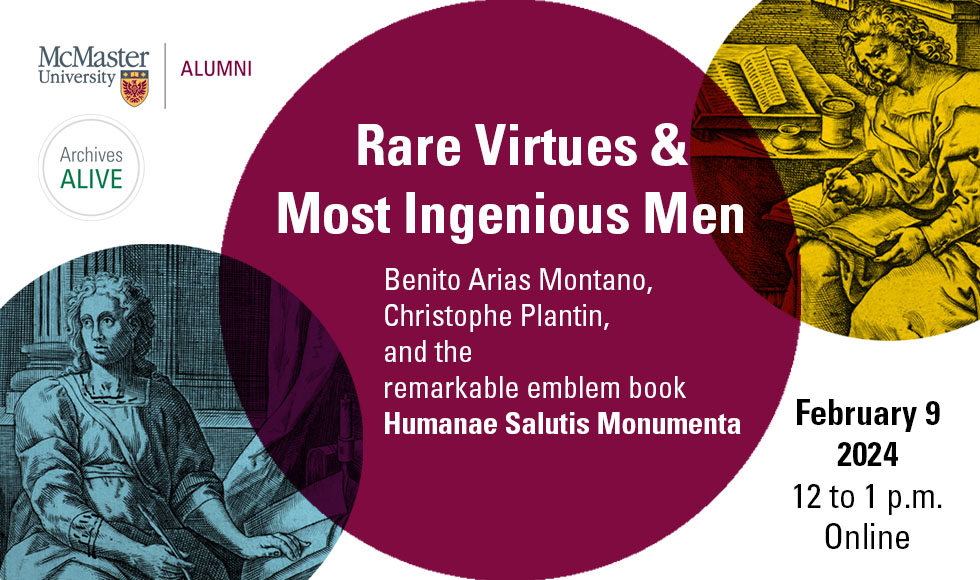
How can it be that two copies of one book with the same title page and publication date are visually and textually different?
This question led Ruth-Ellen St. Onge, distinctive collections cataloguing librarian at McMaster University Library, on an almost year-long journey of untangling the complex history behind a rare sixteenth-century emblem book.
St. Onge’s fascinating findings will be presented next month at a public virtual talk entitled, Rare Virtues & Most Ingenious Men: Benito Arias Montano, Christophe Plantin, and the Remarkable Emblem Book Humanae Salutis Monumenta. The free presentation is set for Feb. 9, 2024, from noon to 1 p.m. ET.
“One of the first books I catalogued when I came to McMaster early last year was a 1571 copy of Benito Arias Montano’s Humanae Salutis Monumenta,” said St. Onge. “During this time, I discovered that we had another copy with the same title page and date, but the two texts were typographically and illustratively different. This started me on an unexpected and lengthy adventure to understand the publication history of this book.”
Emblem books contain allegorical illustrations, typically accompanied by a caption and a longer poem or text explaining the meaning of the images. They were popular throughout Europe during the 16th and 17th centuries and can be secular or religious in nature.
Arias Montano’s Humanae Salutis Monumenta, which roughly translates to “Monuments of Human Salvation” in English, features illustrations of events from the Bible paired with Latin captions and poems. It was printed and published by Christophe Plantin, a French humanist and one of the most significant and well documented printer-publishers of the early modern period.
The two men developed a close friendship while Arias Montano, a Spanish priest and royal chaplain to Philip II, was overseeing Plantin’s project of printing the Bible in its original languages. Arias Montano and Plantin produced several books together throughout their lifetimes.
“Through works like Humanae Salutis Monumenta, Arias Montano and Plantin were trying to promote tolerance during a time of significant religious warfare and violence,” said St. Onge. “That being said, depending on which religious authority was in power, publishing this book could have gotten the two men in a lot of trouble.”
St. Onge says this helps explain the discrepancies between the two copies held at McMaster.
“As it turns out, one of the copies that we hold is actually a later edition,” she said. “It’s thought by some scholars that Plantin kept the title page with the 1571 publication date to obscure the fact that he was producing new editions.”
The upcoming Archives Alive presentation will delve deeper into the friendship and working partnership of Arias Montano and Plantin and reveal more of the intricate and surprising details surrounding this rare emblem book.
“What’s most compelling to me about rare books is that they offer a way of connecting with and trying to understand human beings of the past,” said St. Onge. “Between the author, printer, engraver, illustrator, and book owners, you can uncover so many layers of stories in one book.”
St. Onge holds a PhD in French and book history and print culture, as well as a master’s degree in information studies in library and information science, both from the University of Toronto.
All are welcome to attend the Archives Alive presentation. Admission is free.
Register for the Feb. 9 Archives Alive event
Archives Alive showcases the unique holdings of McMaster University Library’s William Ready Division of Archives and Research Collections. A wealth of resources exist which will delight and inform, from rare books created before 1800 to contemporary writers’ archives. Recognizing that archives can feel intimidating, these talks allow staff and researchers to share their knowledge with the community and introduce collection items housed within the library. Archives Alive is presented by McMaster University Library and McMaster Alumni.
